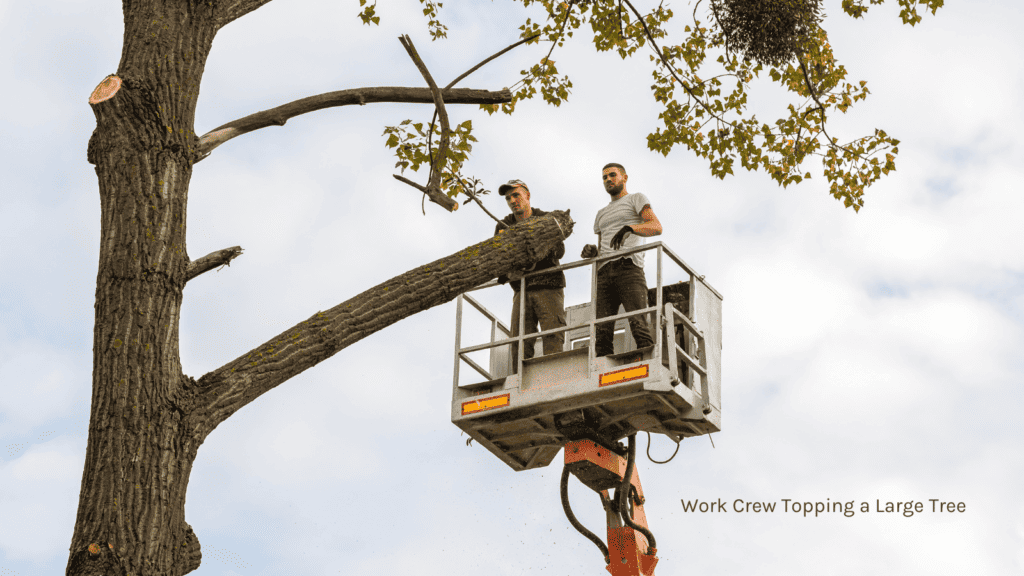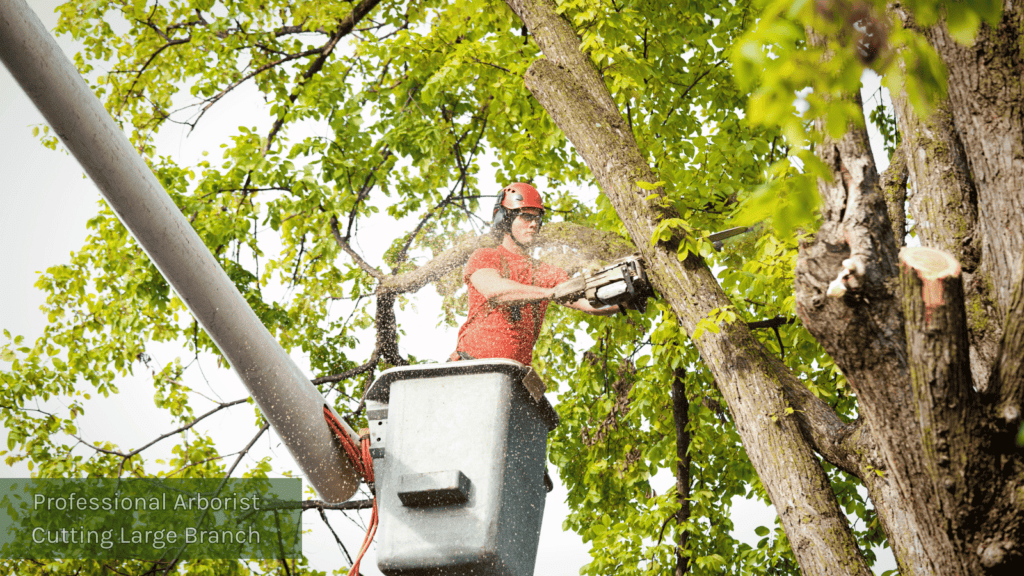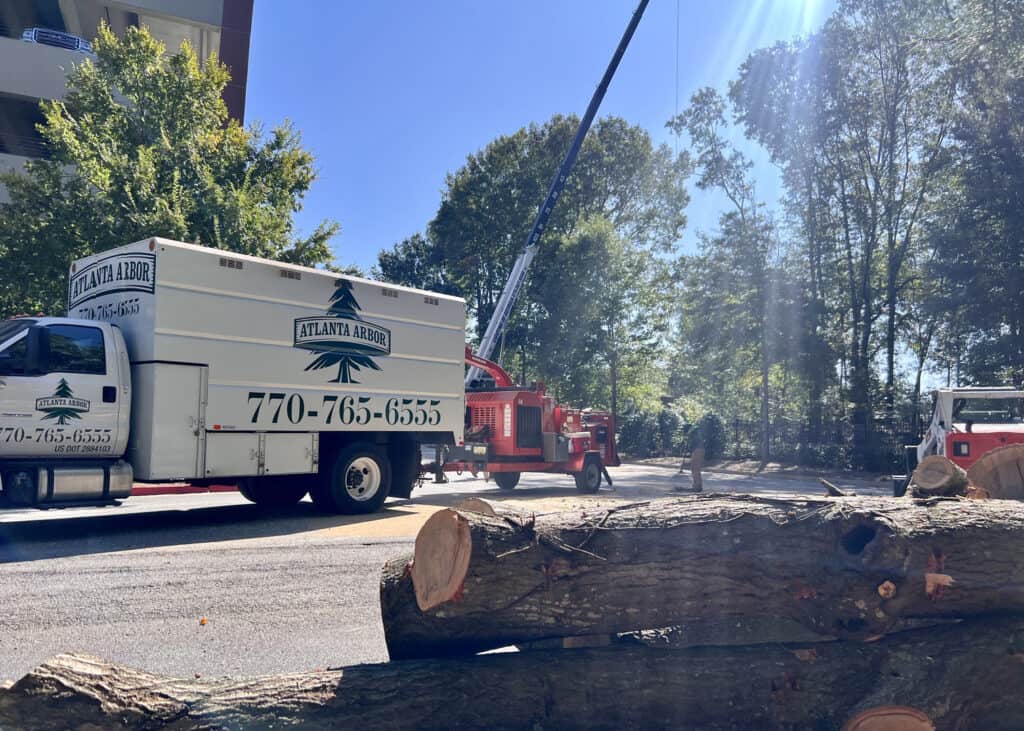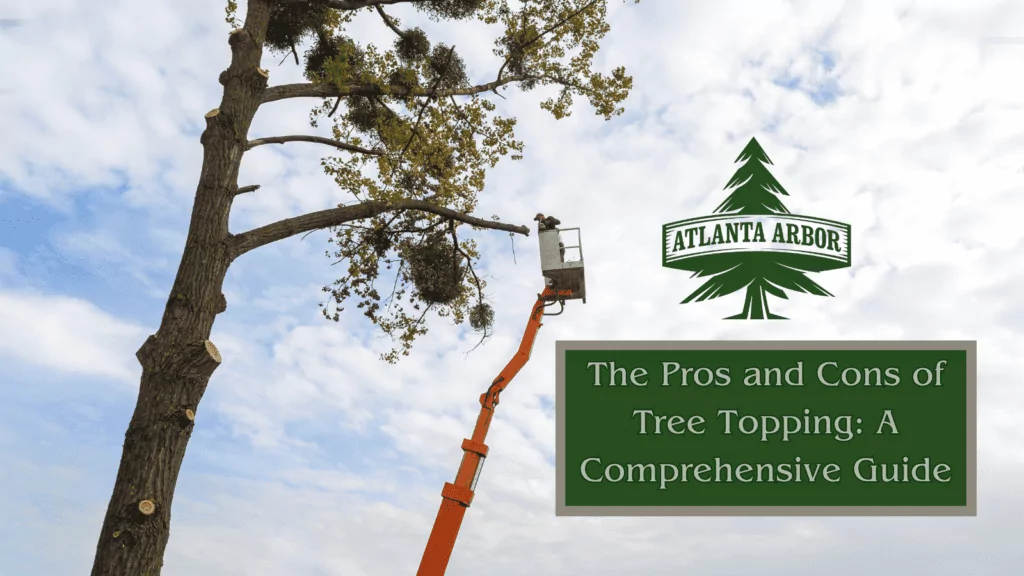Tree topping, a subject of considerable debate among arboriculture experts, is a tree pruning practice historically used for managing the growth and size of trees, especially in urban areas. This method involves the removal of the upper branches of a tree, drastically reducing its size. While initially popular for its quick results in controlling tree height and spread, tree topping has come under scrutiny for its long-term impact on tree health and safety.
Recent statistics reveal telling insights: According to the International Society of Arboriculture, trees subjected to topping are prone to a 20-30% increase in decay and disease susceptibility. Furthermore, a study by the Arboricultural Journal indicated that topped trees have a significantly shortened lifespan, with over 50% of topped trees requiring removal within five years due to health deterioration. These figures underscore a critical reassessment of tree topping practices in modern arboriculture.

What Is Tree Topping?
Tree topping is a controversial pruning practice that involves cutting the upper branches of a tree to stubs, significantly reducing its height. This method is often used for quick size reduction or to clear space around power lines and buildings. However, it can lead to unhealthy regrowth, increased susceptibility to pests and diseases, and potential long-term damage to the tree’s structure.
What is the Process and Techniques Used When Tree Topping?
Tree topping involves cutting away large branches or the upper parts of a tree, leaving stubs or lateral branches that are not large enough to assume the role of a terminal leader. The process can be drastic, often removing 50 to 100% of the tree’s crown. Unlike other pruning methods, which focus on removing specific branches to improve the tree’s structure and health, tree topping is often more about quickly reducing the size of a tree. However, this method doesn’t consider the long-term health implications for the tree, which can lead to various problems and risks.
Why Tree Topping is Controversial: Perspectives from Industry Professionals
Industry professionals, including arborists and environmentalists, often voice strong concerns about tree topping. The primary criticism lies in the practice’s detrimental impact on tree health and structure. Experts argue that topping can lead to weakened trees, increased susceptibility to pests and diseases, and rapid, uncontrolled growth of weak branches. This perspective is grounded in a growing body of research and field observations, indicating the potential long-term harm topping can inflict on trees.
How Does Tree Topping Impact Tree Health Compared to Healthy Trees?
Tree topping significantly impacts tree health, often leading to detrimental consequences. This practice reduces a tree’s ability to produce food via photosynthesis, placing it under considerable stress. Such stress increases the tree’s vulnerability to diseases, decay, and pests. The new growth that follows is typically weakly attached, posing a heightened risk of branch failure. Moreover, topped trees often demand more maintenance and may evolve into safety hazards.
Understanding these impacts highlights the importance of recognizing the signs of a healthy tree. Healthy trees, in contrast to topped trees, exhibit characteristics that contribute to their longevity and robustness. These signs include a full canopy, strong trunk, and healthy root system, among others. The following section delves into these characteristics, showcasing what truly makes a tree thrive.
What Are The Signs Of A Healthy Tree?
A healthy tree typically exhibits the following characteristics:
- Full, Lush Canopy: Dense and vibrant foliage indicates good leaf health and effective photosynthesis.
- Strong, Robust Trunk: A sturdy trunk with no signs of decay or damage supports the tree’s structure.
- Healthy Bark: Intact and disease-free bark protects the tree from external threats.
- New Growth: Regular appearance of new buds and branches signifies ongoing growth and vitality.
- Resilient Branches: Branches are strong and free from breakages, cracks, or weak joints.
- Extensive Root System: A wide-reaching and healthy root system provides stability and efficient nutrient absorption.
- Absence of Pests and Diseases: The tree shows no signs of infestations or diseases, which can be detrimental to its health.
- Well-Spaced Branches: Properly spaced branches ensure adequate air circulation and light penetration throughout the canopy.
- Natural Shape and Form: The tree maintains its species-specific shape, indicative of balanced and healthy growth.
- Leaf Color and Texture: Leaves are vibrant and characteristic of the species, without discoloration, spots, or wilting.
Maintaining these aspects contributes significantly to the overall health and longevity of a tree.

What Are The Perceived Benefits of Tree Topping?
While tree topping is often criticized for its potential harm to trees, it’s important to acknowledge the reasons why this practice gained popularity and the perceived benefits that led to its widespread use:
- Immediate Size Control: Tree topping is sometimes chosen for its ability to quickly reduce a tree’s height and spread, particularly in urban areas where space is limited.
- View Enhancement: Topping is often used to clear obstructed views, which can be a significant factor in residential areas or properties with scenic vistas.
- Risk Reduction: In certain situations, topping is seen as a way to reduce risks associated with large, potentially unstable trees, especially in areas prone to severe weather.
- Utility Line Clearance: Topping is employed to prevent trees from interfering with utility lines, although there are better long-term solutions for this issue.
- Aesthetic Reasons: Some property owners opt for tree topping as a quick way to alter the appearance of a tree, although this is based on personal preference rather than arboricultural best practices.
It’s crucial to note that these benefits are often short-term and can be outweighed by the long-term health impacts on the tree. Modern arboriculture recommends alternative methods to achieve these goals without the detrimental effects associated with tree topping.
Exploring Tree Trimming and Pruning as Alternatives to Tree Topping
In response to the negative impacts of tree topping, tree care experts often recommend tree trimming and pruning methods like thinning and crown reduction. These practices aim to enhance a tree’s health and structure without altering its inherent form. Tree thinning involves selectively removing branches to lighten the crown, thereby improving light penetration and air circulation while retaining the tree’s shape. Crown reduction, another effective technique, reduces the tree’s height and spread in a way that respects its natural growth patterns, unlike the more drastic measures of topping. These methods not only maintain the aesthetic appeal of trees but also ensure their long-term health and stability.

Choose Atlanta Arbor’s Tree Trimming and Pruning Services
As we move away from the harmful practices of tree topping, the importance of sustainable and tree-friendly alternatives becomes evident. For those dedicated to preserving the health and beauty of their trees, professional tree trimming and pruning are the preferred methods. Atlanta Arbor excels in these services, providing expert care that focuses on the health and longevity of your trees. To explore how Atlanta Arbor can enhance your trees through skilled trimming and pruning, visit their Tree Trimming and Pruning in Atlanta service page.
